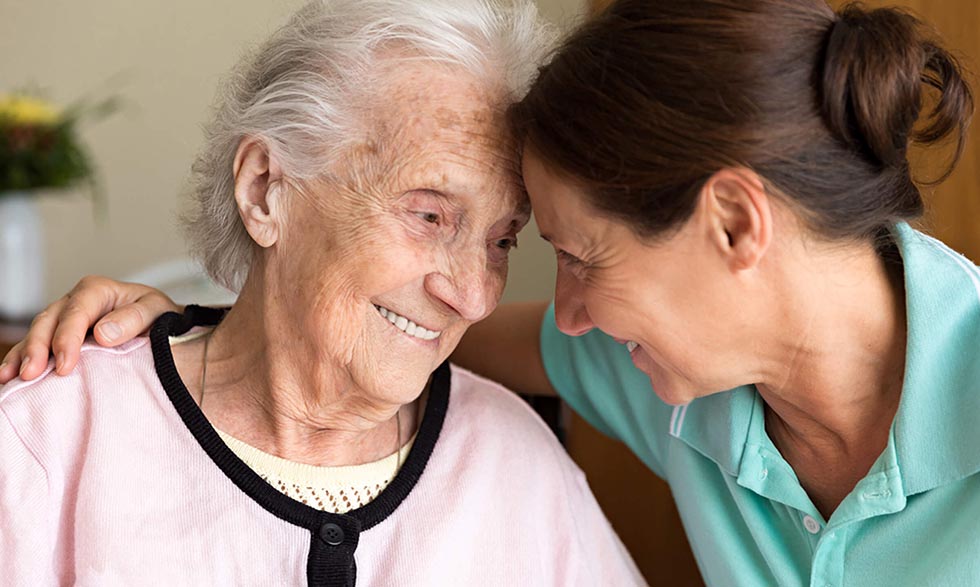
Do you remind a family member or friend to take a life-saving medication each day? Do you spend time helping a disabled neighbor with chores?
You may not realize it, but you are providing an important service: care. Caregiving helps a person in need. Helping others go to the doctor, bathe and dress, take medicine, clean, or eat are all types of caregiving.
Family members, friends, neighbors, or community members who provide help or care every day are recognized as informal caregivers. Informal caregivers may not think of themselves as caregivers. They are generally not paid.
Formal caregivers are paid for their time and caregiving services or are volunteers. These can be licensed health care providers or home care aides or companions. They deliver care in a person’s home or in a residential care setting.
Whether it’s formal or informal, caregiving helps people access life-saving medical, social, and other help.
Expanding families
Many people rely on informal caregivers, such as family members, as an affordable caregiving option.
Laura Gitlin, Ph.D., has been funded by NIH’s National Institute on Aging (NIA) for various trials that test ways to support family caregivers and informal caregivers. Dr. Gitlin is dean of the College of Nursing and Health Professions at Drexel University in Philadelphia, Pennsylvania.
Dr. Gitlin and her colleagues are currently testing the Adult Day Service Plus program with 30 sites across the U.S. Funded by NIA, the study is evaluating whether a program that provides education, skills, and support to families using adult day care lowers nursing home placement and reduces caregiver distress.
“Most families provide exceptional care, but may not even realize their own efforts and all that they do,” Dr. Gitlin said.
In 2011 alone, 18 million informal caregivers provided billion hours of care on a monthly basis to Medicare beneficiaries age 65 and older, according to a joint report released recently by NIA.
The composition of families is also changing. Many family members have moved away from their hometowns, changing the way they provide support.
“Long distance caregiving is increasing. There are not enough family caregivers now and into the future to address all of the long-term care needs with people living longer,” Dr. Gitlin said.
Long distance family caregivers participate in many important ways, including helping to schedule medical visits, providing financial support, and coordinating care.
Neighbors and community members also step in to help. “The definition of family has expanded to include individuals beyond blood relatives such as neighbors and friends,” Dr. Gitlin added.
Formal care options
Some formal caregivers help people in their homes. Others provide care in facilities like assisted living homes and nursing homes.
In addition to in-home and facility caregiving, Dr. Gitlin said people are finding other ways to access formal care.
Some, especially those in rural areas, use telehealth to connect with health care providers or health aides digitally from their own homes. Others use group caregiving services to help reduce costs.
In what’s known as the “Village Movement,” small membership organizations bring communities of older people together, such as those in a neighborhood or apartment building. They pool financial resources to share important services, like home health care, handy work, and grocery delivery.
NIH research and resources
NIA spearheads research efforts aimed at identifying and addressing the unmet needs of people with Alzheimer’s disease and related dementias and their caregivers. NIA supports formal and informal caregiving research.
“While research to date suggests that caregiving can lead to poor health outcomes, these connections are not well understood,” said Elena Fazio, Ph.D., who helps lead NIA’s caregiving research efforts. “Future research has the potential to show us factors that promote health and well- being of those providing care. The benefits as well as burdens of caregiving may change with time and illness progression. And the service and support needs of families and communities may shift,” Dr. Fazio added.
Dr. Gitlin adds that researching how to help the caregiver is key for improving care for patients. “It’s important that family caregivers really consider how they can take care of themselves,”
Dr. Gitlin said. “That is equally as important as caring for the other person.”
Dr. Gitlin notes that the costs of caregiving can impact families’ options and plans too.
Choosing a caregiving path
Trying to decide if caregiving would be helpful for you or a family member?
NIA and MedlinePlus have articles on cognitive health, function, Alzheimer’s disease, and dementia. Read about causes, signs, symptoms, and treatment options.
Wondering which caregiving situation is the right one for you? NIA and MedlinePlus have resources to help.
NIA features articles on long distance caregiving, choosing a nursing home, care options for patients with Alzheimer’s and dementia, and caregiving payment and insurance options.
In addition, NIA has a helpful checklist on advance care planning.
